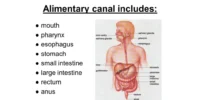The human stomach plays a vital role in the digestive system. It is responsible for breaking down the food we eat into simpler substances that the body can absorb. In this blog, we will explore the structure of the human stomach, understand its different parts, and learn about the functions each part performs. A labelled stomach diagram is also included to make the topic easier to understand for students, teachers, and medical enthusiasts.
What is the Stomach?
The stomach is a muscular, hollow organ found in the upper-left region of the abdomen, between the esophagus and the small intestine. Its main function is to digest food using gastric fluids and enzymes before sending it into the small intestine for nutrient absorption.
Parts of the Human Stomach and Their Functions
Here is a breakdown of the main parts of the stomach and what each part does:
1. Cardia
Location: Where the esophagus connects to the stomach.
Function: Allows food to enter the stomach and prevents backflow into the esophagus.
2. Fundus
Location: The upper curved portion of the stomach.
Function: Stores undigested food and gases released during digestion.
3. Body (Corpus)
Location: The central and largest part of the stomach.
Function: Main site for mixing and breakdown of food using digestive enzymes and acids.
4. Antrum
Location: Lower portion of the stomach.
Function: Grinds food and pushes it towards the small intestine.
5. Pylorus
Location: Connects the stomach to the small intestine.
Function: Controls the emptying of stomach contents into the small intestine through the pyloric sphincter.
6. Duodenum
Location: First part of the small intestine, just after the stomach.
Function: Mixes chyme with bile and enzymes; begins nutrient absorption.
Additional Key Components
- Rugae: Folds in the stomach lining that allow expansion when food enters.
- Gastric Glands: Produce hydrochloric acid and digestive enzymes like pepsin.
- Mucous Lining: Protects the stomach wall from acidic gastric juices.

Functions of the Stomach
- Breaks down food both mechanically and chemically.
- Kills harmful bacteria using hydrochloric acid.
- Stores food temporarily before it moves to the small intestine.
- Secretes enzymes and acids to aid digestion.
- Absorbs limited substances, like alcohol and certain medications.
Conclusion
The human stomach is more than just a food storage sac; it is a strong organ that performs chemical digestion and nutrient processing. Understanding the stomach’s parts and functions allows us to comprehend the human body’s complexity. We hope you found this blog’s labelled stomach diagram helpful in understanding the subject.







